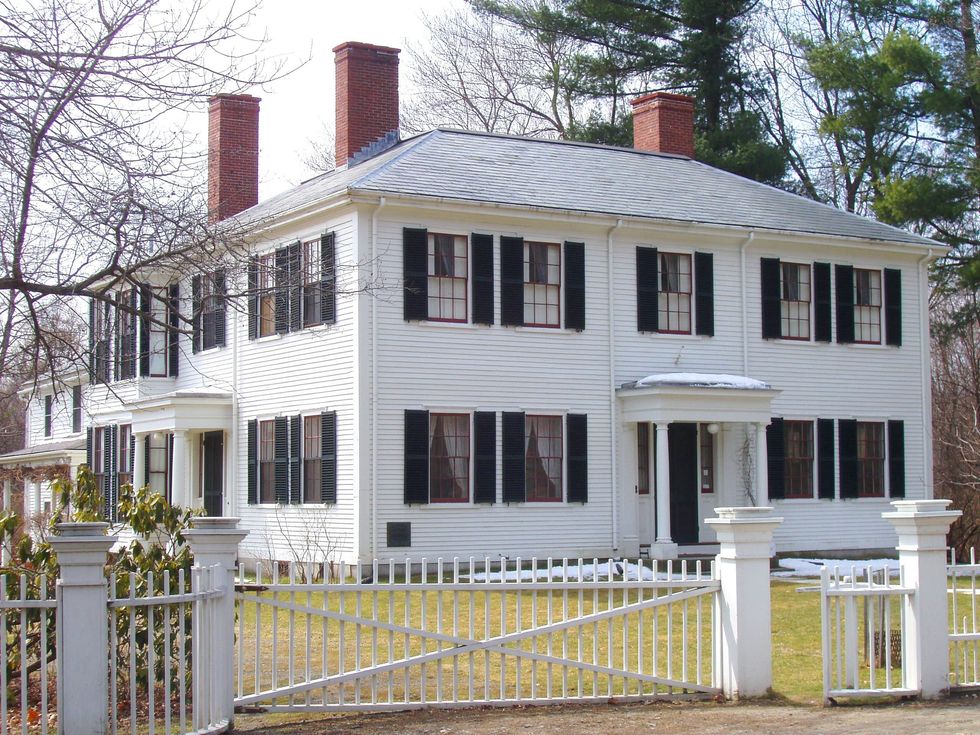Urban agriculture has already brought bees to London, tilapia to Milwaukee, and bunnies to backyards everywhere. The next frontier? Bananas in Paris, perhaps. French Architecture firm SOA has dreamed up a plan to grow the tropical fruit in the city’s moderate climes through a vertical banana plantation installed in a historic building along a dense street. While the project stands out visually as a beautiful way to integrate greenhouse agriculture within a city's grid, the mission is to create an educational farm to create a conversation around the relationship between tropical food and their metropolitan destinations.
Called Urbanana, the building's design mockups envision a completely glass façade to provide passersby a view of the productive farm within. The space would feature a research lab, restaurant, exposition space, and shop, in addition to the area for growing bananas using artificial lights. The six-story building will maximize its space by gutting out the individual floors in favor of catwalks where the plants will rest.
“The collection of features make Urbanana an agricultural operation that’s easy to insert within the urban fabric," SOA writes on its website. It’s positioned to share walls with standard commercial buildings, to make a statement to the public that there's room for agricultre even in a cramped city like Paris “However it’s transparency and lack of floors add breath and depth to the dense and confined space of the Parisian streets.”
The project suggests a way to lower greenhouse gas emissions by eliminating transportation costs involved in bringing Parisians one of their favorite fruits form the furthest reaches of the globe.
The architects conceive of Urbanana as an “embassy” for the banana in Paris. While the bananas shipped around the world are bred to travel rather than taste great, Urbanana would cultivate and enable Parisians to sample a range of varieties with interesting flavors, textures, and histories. And in doing so, the goal is to prompt discussion about the ubiquity of tropical fruit in Northern cities and the environmental impact of shipping fruit around the world.















 This doggo has some concerns. Photo by
This doggo has some concerns. Photo by  Ready to eat.Photo by
Ready to eat.Photo by 

 Let us all bow before Gary, the Internet's most adventurous feline. Photo credit: James Eastham
Let us all bow before Gary, the Internet's most adventurous feline. Photo credit: James Eastham Gary the Cat enjoys some paddling. Photo credit: James Eastham
Gary the Cat enjoys some paddling. Photo credit: James Eastham James and Gary chat with Ryan Reed and Tony Photo credit: Ryan Reed
James and Gary chat with Ryan Reed and Tony Photo credit: Ryan Reed


 Rock deterioration has damaged some of the inscriptions, but they remain visible. Renan Rodrigues Chandu and Pedro Arcanjo José Feitosa, and the Casa Grande boys
Rock deterioration has damaged some of the inscriptions, but they remain visible. Renan Rodrigues Chandu and Pedro Arcanjo José Feitosa, and the Casa Grande boys The Serrote do Letreiro site continues to provide rich insights into ancient life.
The Serrote do Letreiro site continues to provide rich insights into ancient life.

 File:Ralph Waldo Emerson House (Concord, MA).JPG - Wikimedia Commons
commons.wikimedia.org
File:Ralph Waldo Emerson House (Concord, MA).JPG - Wikimedia Commons
commons.wikimedia.org

 The contestants and hosts of Draggieland 2025Faith Cooper
The contestants and hosts of Draggieland 2025Faith Cooper Dulce Gabbana performs at Draggieland 2025.Faith Cooper
Dulce Gabbana performs at Draggieland 2025.Faith Cooper Melaka Mystika, guest host of Texas A&M's Draggieland, entertains the crowd
Faith Cooper
Melaka Mystika, guest host of Texas A&M's Draggieland, entertains the crowd
Faith Cooper